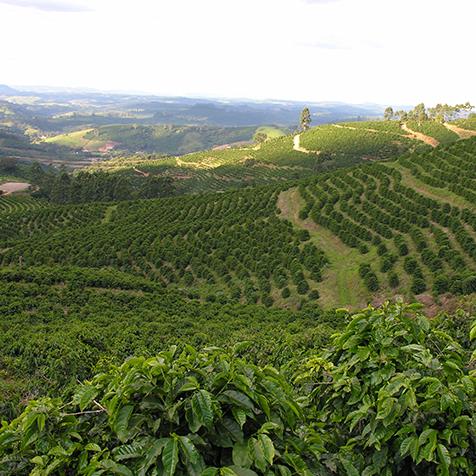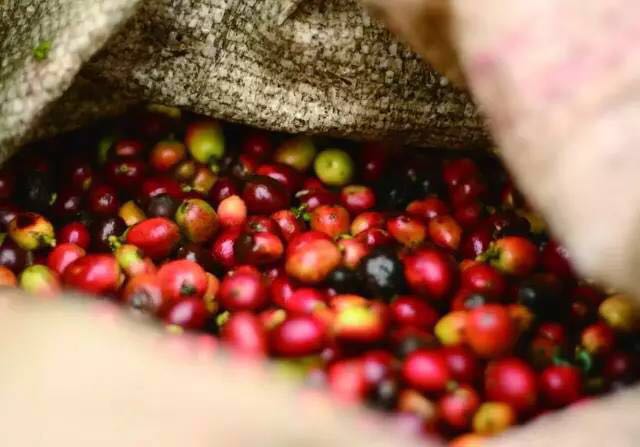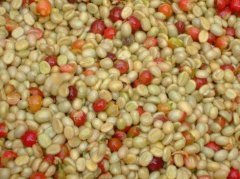Costa Rica's historical coffee industry develops coffee bean export volume
Costa Rica lies between the Pacific Ocean and the Atlantic Ocean, with Nicaragua in the south and Panama in the north. Flowers bloom and butterflies dance all the year round. Its coffee beans are famous for their mild taste, high acidity, aroma and rich texture, so they are favored by coffee tasters.
It is said that in 1779, the Spanish navigator Navarro brought coffee seeds from Cuba to Costa Rica, and Costa Rica began to grow coffee. High-quality Costa Rican coffee is called "extra hard beans". Costa Rica is a high-altitude country, and its coffee is grown above 1500 meters above sea level. The higher the altitude, the better the coffee beans, not only because the higher altitude can increase the acidity of the coffee beans and thus increase the flavor, but also because the night temperature at the higher altitude is lower, which can make the trees grow slowly, thus making the coffee beans have a stronger flavor. In addition, due to the high altitude drop caused by sufficient rainfall, is also very beneficial to the growth of coffee trees.

Today, its coffee industry is one of the most well-organized industries in the world, with a yield of 1700 kg per hectare. Costa Rica, with a population of only 3.5 million, has 400 million coffee trees, and coffee exports account for 25 per cent of the country's total exports. Costa Rica has the most complete government assistance system in the world coffee industry. in order to ensure the quality of coffee beans, the government has imposed strict restrictions on the output of coffee beans, producing only 80,000 tons per year. In the process of growing coffee in Costa Rica, try to avoid the use of chemical fertilizers and pesticides to maintain the most natural flavor. These factors make Costa Rican coffee beans famous in the international market and get the high grade of SHB+10 (selected highland coffee, high-quality coffee beans grown in areas above 1500 meters above sea level). In addition, Costa Rica's coffee industry has adopted new technologies to increase efficiency, including the use of "electric eyes" to select beans and identify coffee beans of irregular size.
Tarasu in Costa Rica is one of the major coffee producers in the world. The coffee is light and pure in flavor and pleasant in aroma. "Tarasu Latin America" coffee is a famous local product, but the production is limited, about 72600 kilograms a year. It is grown on a piece of land called "Latin America". In fact, this land can produce more than 450 tons of coffee a year. But Tarasu Latin America coffee is grown without artificial fertilizers or insecticides, and its harvesting and selection are done by hand, in order to avoid some damage to coffee beans caused by air spray selection.

Important Notice :
前街咖啡 FrontStreet Coffee has moved to new addredd:
FrontStreet Coffee Address: 315,Donghua East Road,GuangZhou
Tel:020 38364473
- Prev

Introduction to the taste and flavor of Guatemala Antigua washed Flower God Coffee
Antigua Flower God Coffee Bean Origin: Guatemala: raw beans: roasting: washing: medium roasting: medium taste, smooth, floral flavor, slightly sour Guatemala has a unique volcanic topography and high altitude, where the topography and soil environment uniquely creates the unique flavor of coffee beans, while Antigua is surrounded by three volcanoes. Guardia
- Next

Introduction of boutique coffee flavor in Santo Domingo, Dominica
Dominica: Santo Domingo coffee taste characteristics: fresh and elegant, full particles, excellent acidity, pleasant aroma. The Dominican Republic is located in the east of the island of Haiti in the West Indies, bordering the Republic of Haiti to the west, the Atlantic Ocean to the north and the Caribbean Sea to the south. It covers an area of about 49000 square kilometers and has a population of 7.1 million. The Dominican Republic and the Republic of Haiti coexist on an island.
Related
- Detailed explanation of Jadeite planting Land in Panamanian Jadeite Manor introduction to the grading system of Jadeite competitive bidding, Red bid, Green bid and Rose Summer
- Story of Coffee planting in Brenka region of Costa Rica Stonehenge Manor anaerobic heavy honey treatment of flavor mouth
- What's on the barrel of Blue Mountain Coffee beans?
- Can American coffee also pull flowers? How to use hot American style to pull out a good-looking pattern?
- Can you make a cold extract with coffee beans? What is the right proportion for cold-extracted coffee formula?
- Indonesian PWN Gold Mandrine Coffee Origin Features Flavor How to Chong? Mandolin coffee is American.
- A brief introduction to the flavor characteristics of Brazilian yellow bourbon coffee beans
- What is the effect of different water quality on the flavor of cold-extracted coffee? What kind of water is best for brewing coffee?
- Why do you think of Rose Summer whenever you mention Panamanian coffee?
- Introduction to the characteristics of authentic blue mountain coffee bean producing areas? What is the CIB Coffee Authority in Jamaica?

